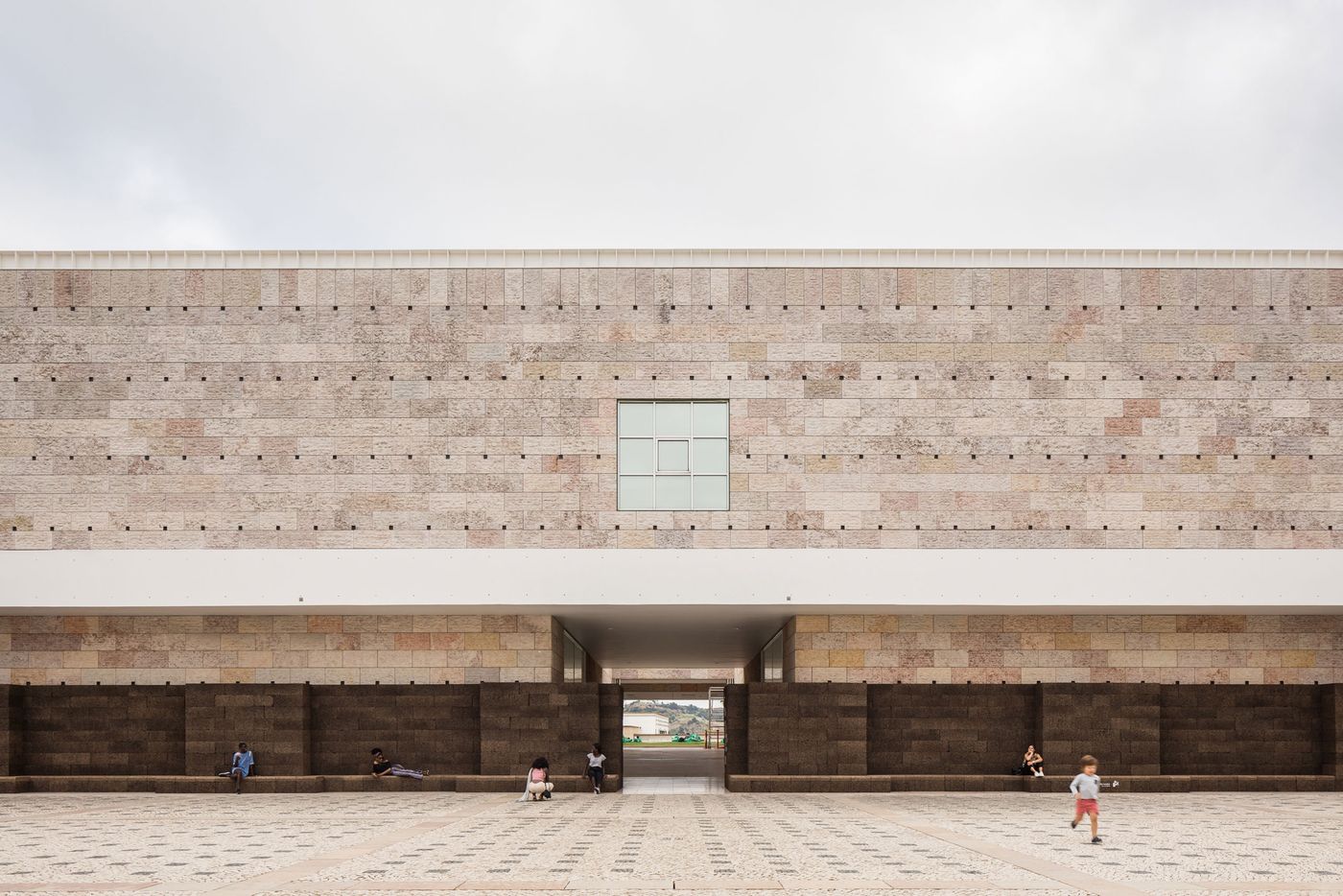
A Square In Summer: Cork Redefines Lisbon's Cultural Centre of Belém
Words by Sara Panagiotopoulou
Location
Lisbon, Portugal
A Square In Summer: Cork Redefines Lisbon's Cultural Centre of Belém
Words by Sara Panagiotopoulou
Lisbon, Portugal
Lisbon, Portugal
Location
The cleft limestone cladding the walls of Lisbon's Cultural Centre of Belém (CCB) was transformed in 2017 by Portugese architect, José Neves, through the use of a very humble material: cork. Sponsored by Amorim Isolamentos and curated by André Tavares, A Square in Summer, the project, has redefined the existing space, breathing new life into it through a simple shift in its scale; or rather the perception of this achievement.
Solid blocks of brown cork where used to build a "panneling-like lining" around the lower half of the Cultural Center’s south-facing limestone walls, beginning with a 4.2 meter high frame that surrounds the entrance to the square which then dips down to a height of 2.8 meters, a height which remains consistent throughout the rest of its 68 meter length. As far as style goes, this modulated cork panneling was designed in accordence to the existing architecture of the square, which provides access to the Museum, the restaurant and the hanging garden overlooking the river.

The cork frame to the entrance is 4.2m high before descending to the constant height with which the wall runs along the square. Photo by Francisco Nogueira.
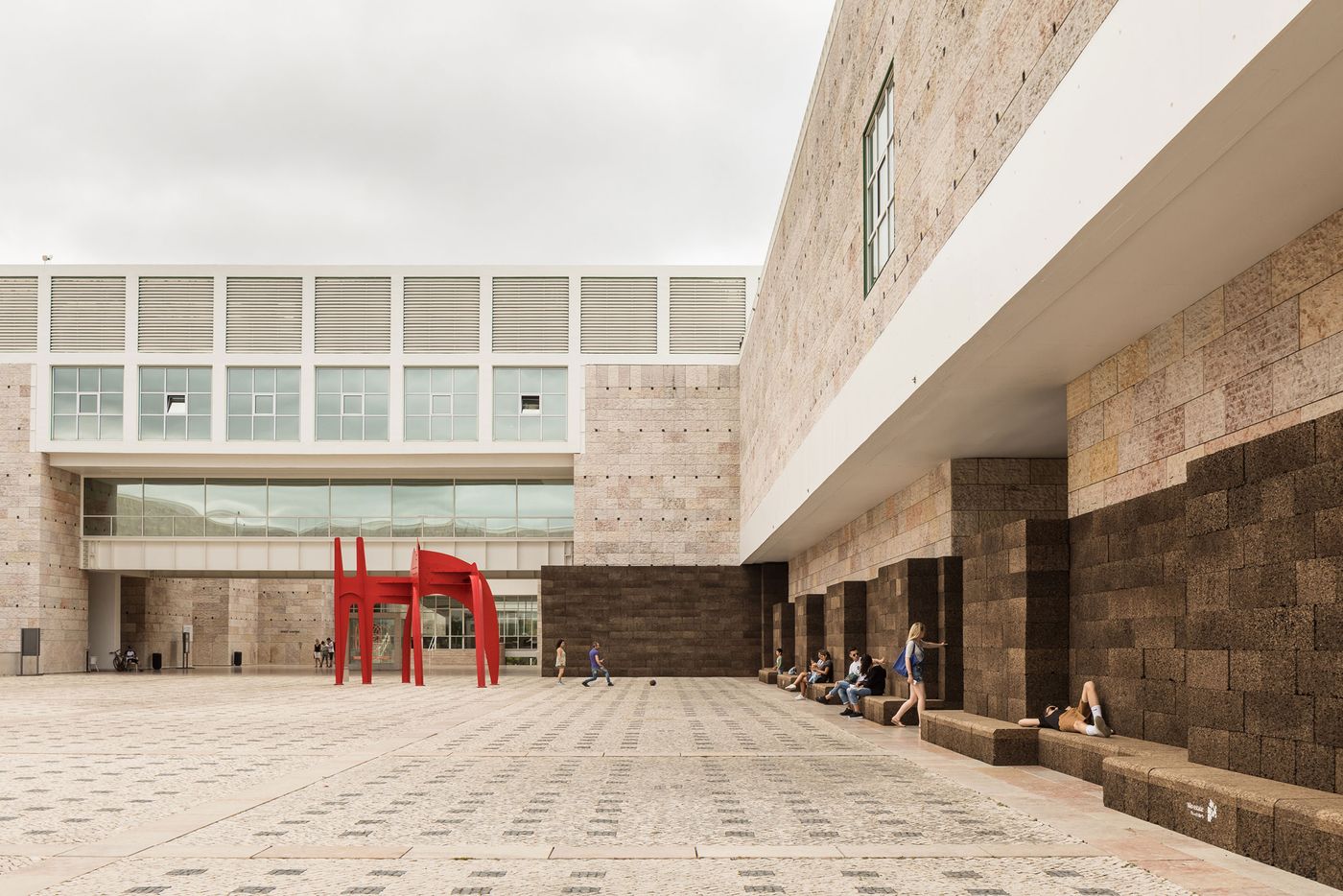
The panelling-like lining runs along the 68m south wall that encloses the square, in the shade for nearly the whole day. Photo by Francisco Nogueira.
The use of cork is very interesting as this is a material that is not only light and durable - which in turn adds a "lightness" to the square itself - but is also transformational, in that it changes its state, color and texture, as time progresses.
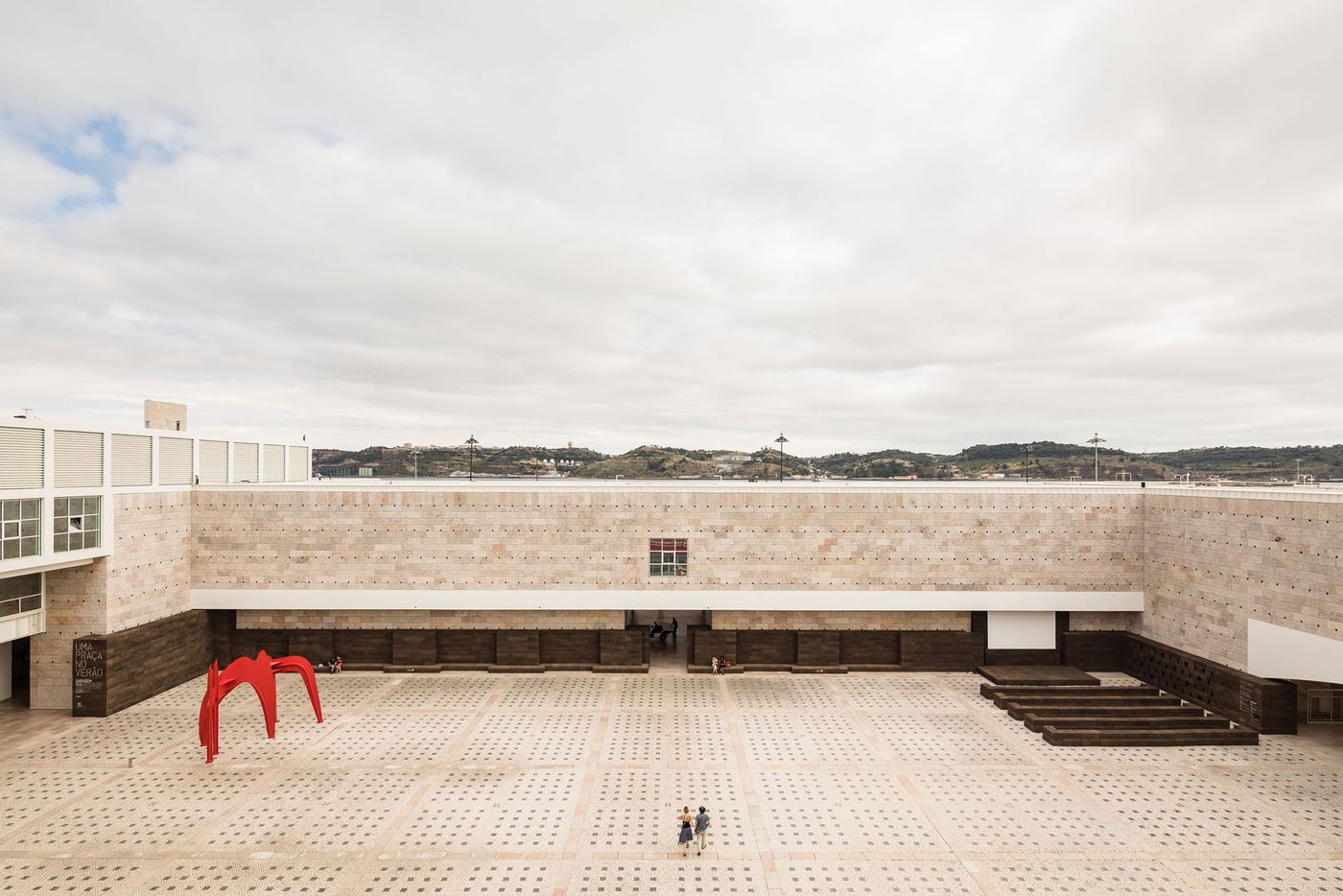
The square is a place of constant movement, with people crossing it, towards the museum, the Garagem Sul and the hanging garden that overlooks the river. Photo by Francisco Nogueira.
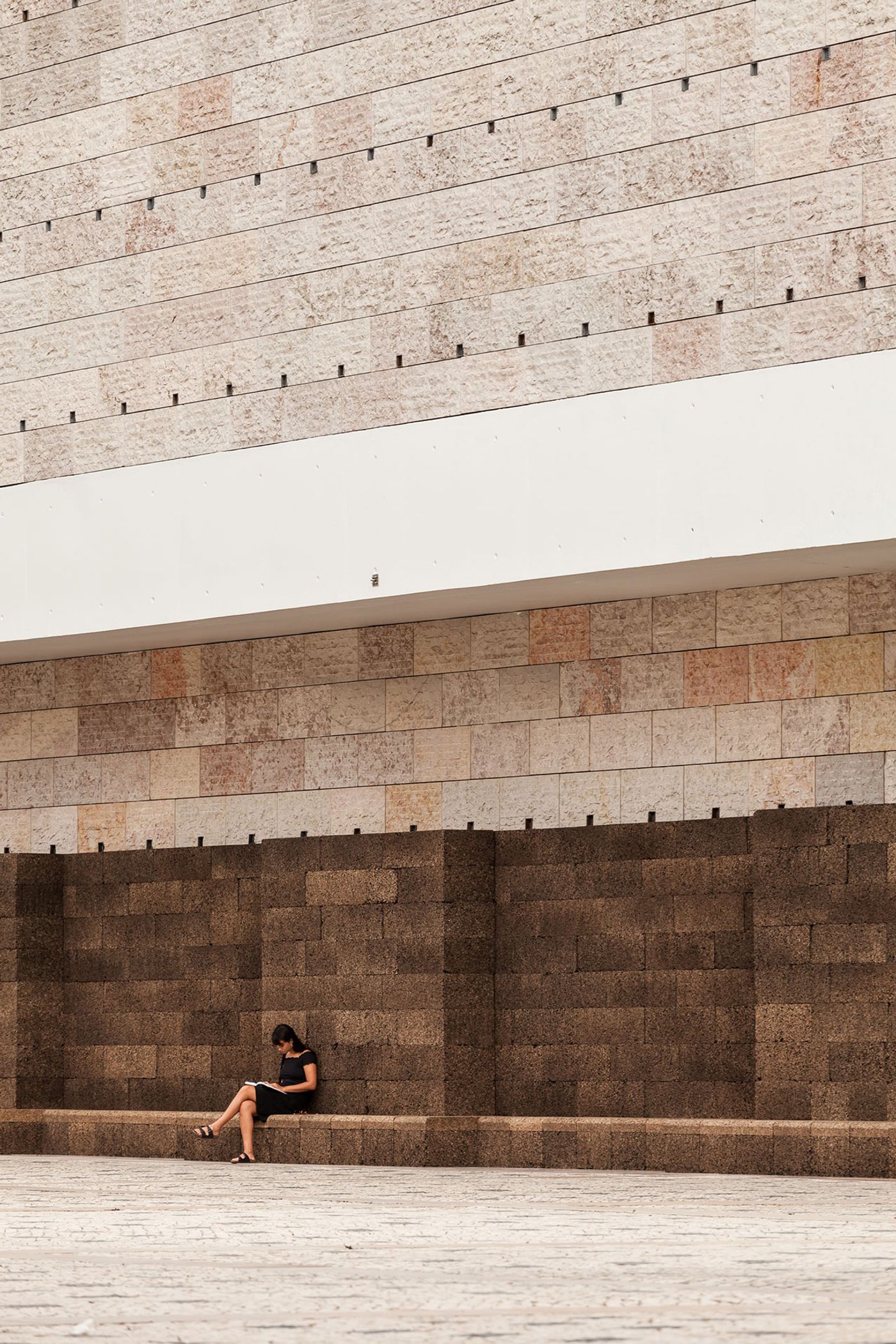
Like in many Italian palaces, a bench allows one to contemplate the urban spectacle or, if one prefers, to be on his own. Photo by Francisco Nogueira.
The new panneling also included various elements that made it user-friendly for the thousands of people who visit the CCB during the summer months, such as benches, formed in the cork panneling itself, that allowed visitors a moment of respite in the shade (the south wall is in the shade for a large portion of the day). In following the cork wall's length towards the western end of the square, visitors are led to an outdoor movie theater - complete with cork seats - in a corner spot sheltered from the wind thereby making it perfect for night-time screenings.
An outdoor screening room. An intereactive installation. The redefinition of an existing space. All in all, A Square in Summer proves the amazing power that lies in the utilization of such a humble, yet multifaceted, material.

The cork wall has two alternating thicknesses, creating a mass that vibrates with protrusions and recesses. Photo by Francisco Nogueira.
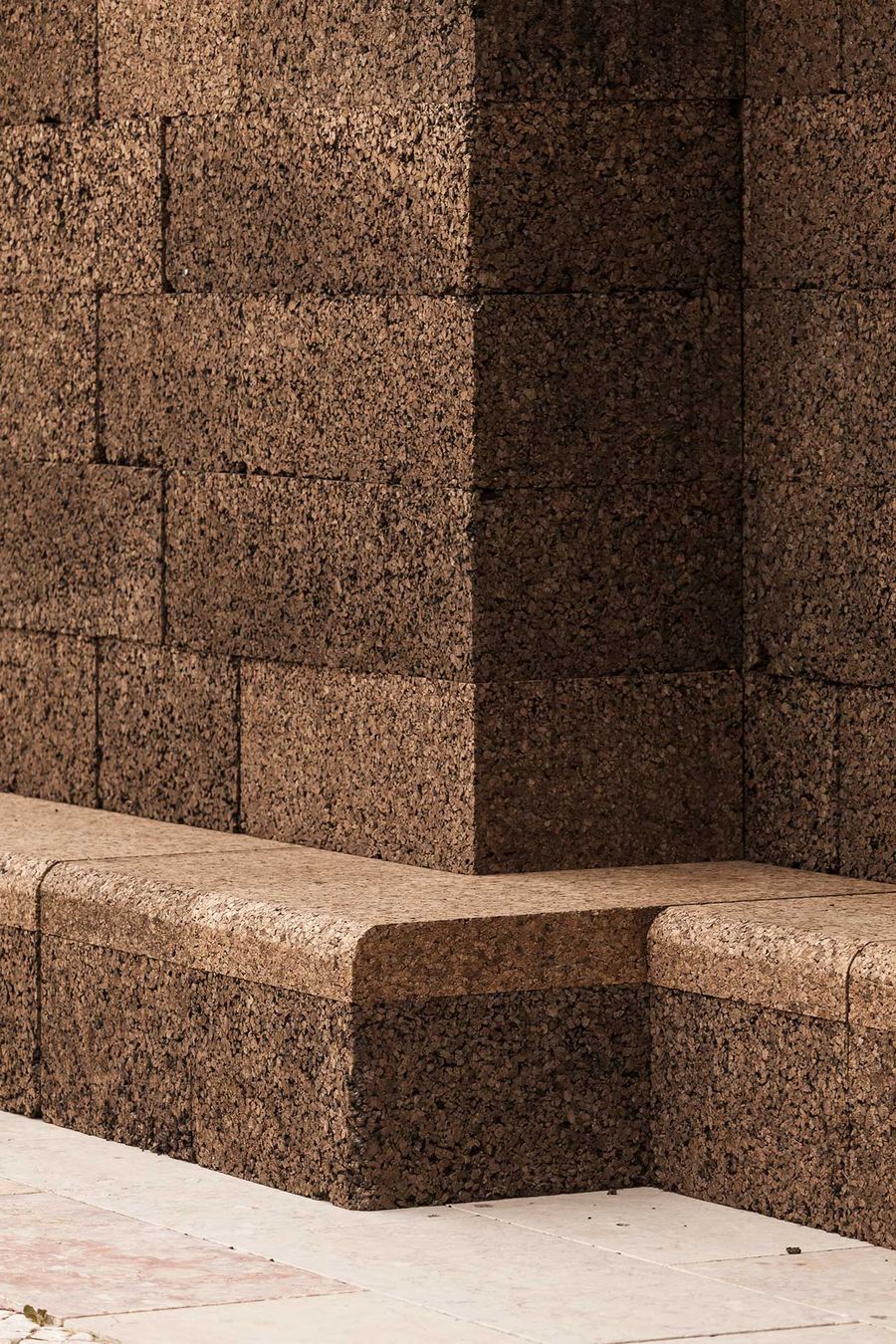
Vertical and horizontal edges were treated differently, some being left sharp and others rounded off, so that they resisted and aged differently. Photo by Francisco Nogueira.
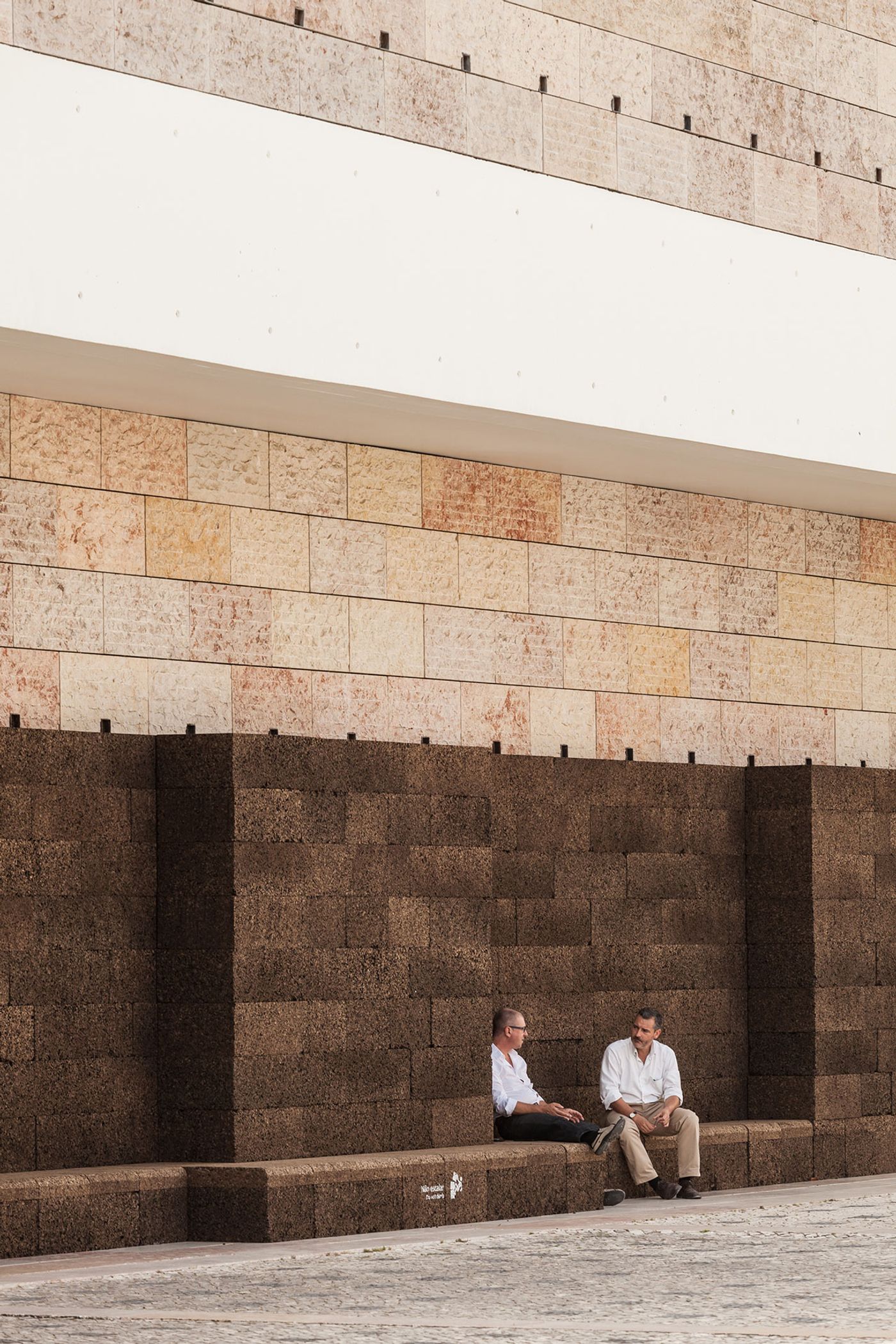
Photo by Francisco Nogueira.

At the western end of the square, the wall turns, making a corner in which to view films sheltered from the wind. Photo by Francisco Nogueira.
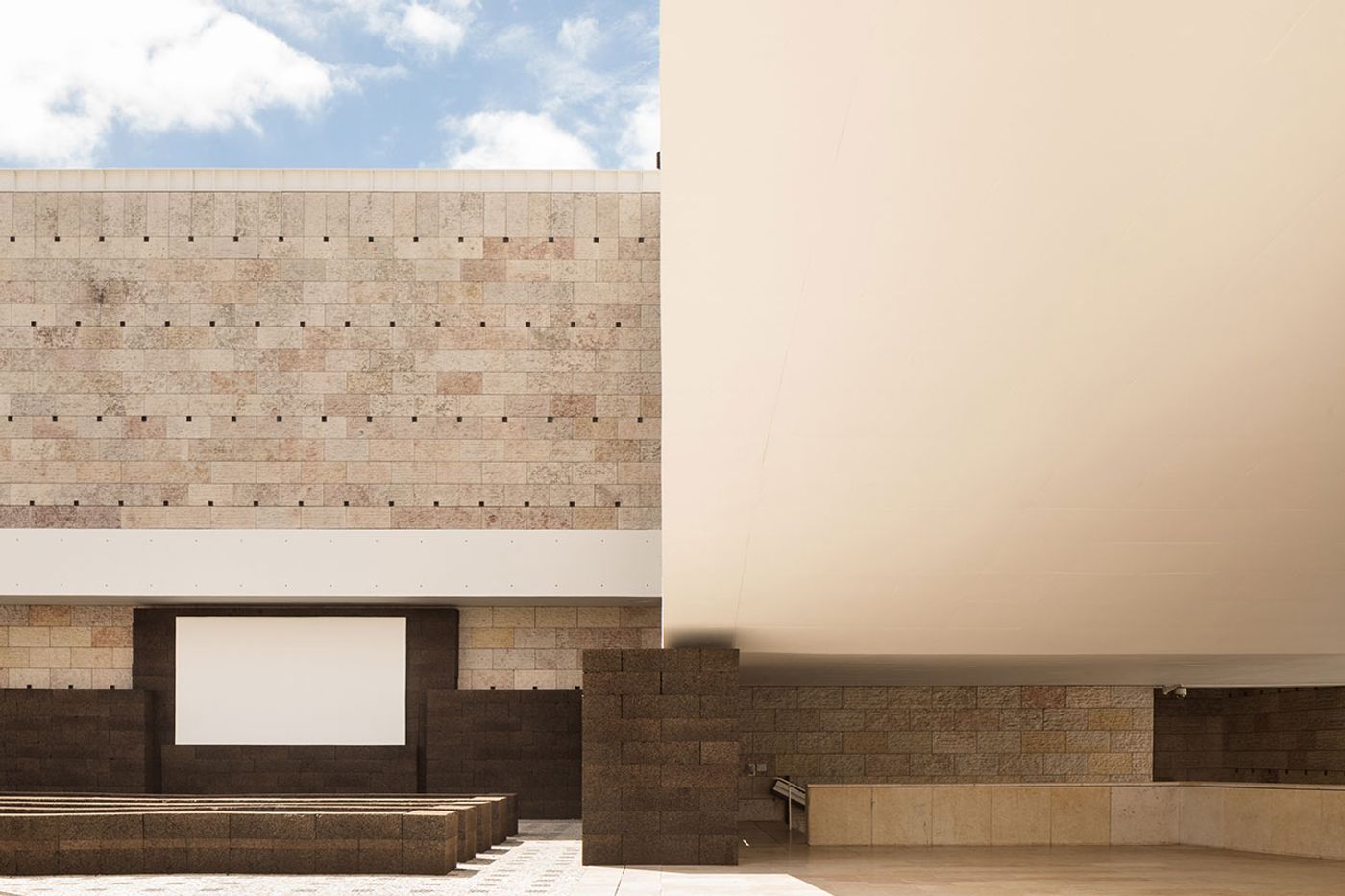
The height of the wall — 2.8m — is the height of the base of the existing concrete arch that visually opens the square to the city. Photo by Francisco Nogueira.
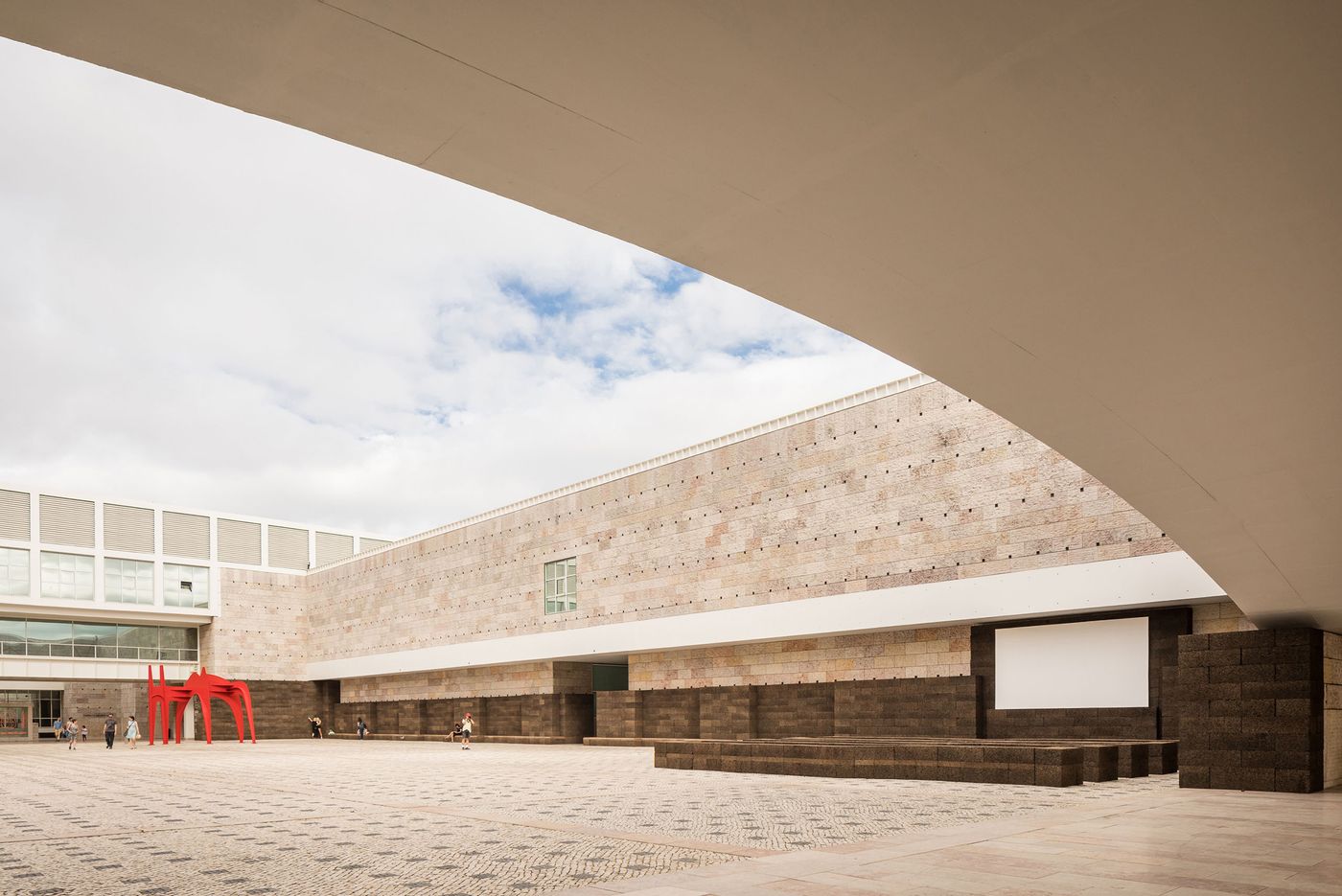
With the presence of the wall, of its form, materiality, colour, light and shade, our perception shifts constantly. Photo by Francisco Nogueira.
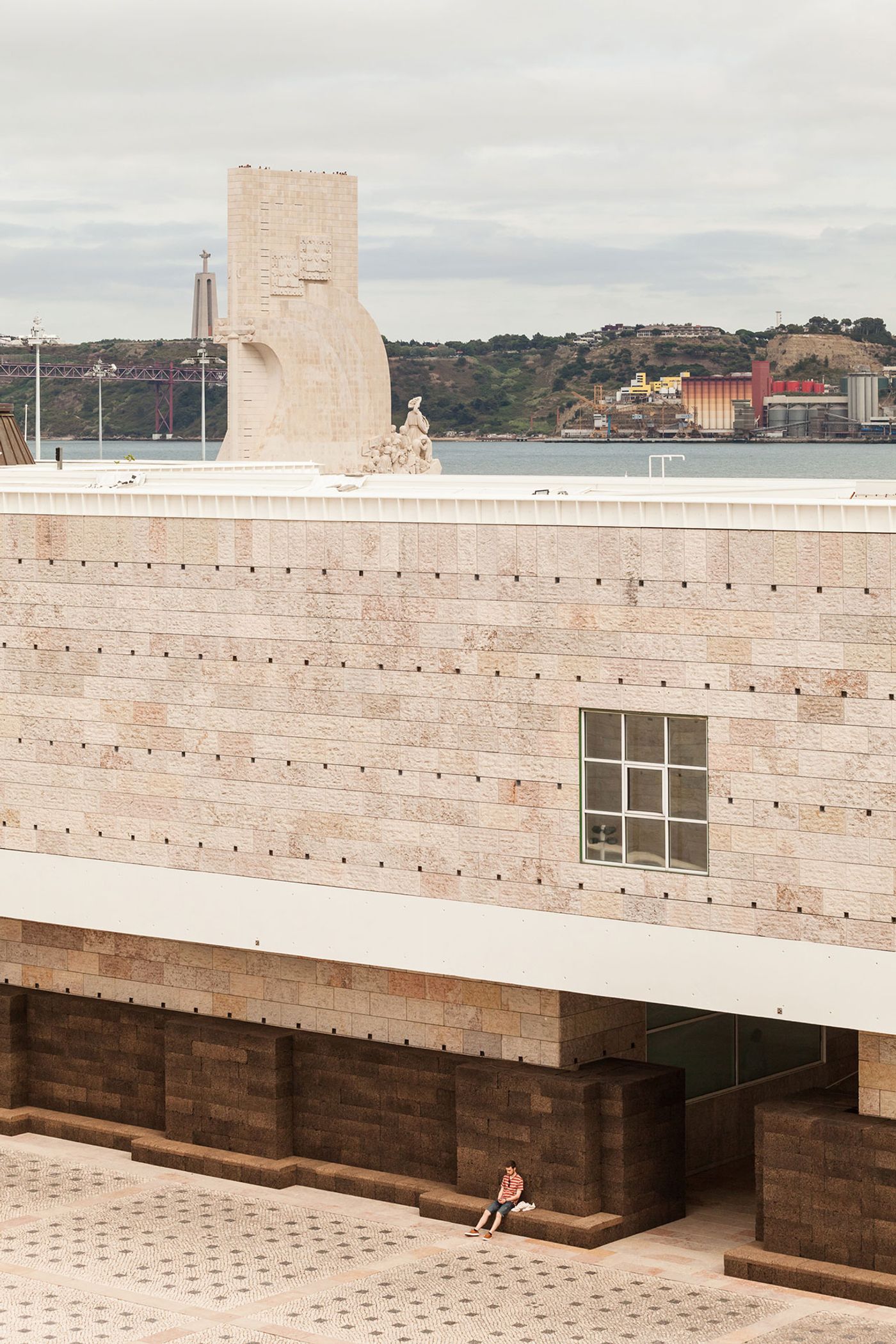
The reading of a temporary work can be permanent, lasting in the memory of those who experience it. Photo by Francisco Nogueira.
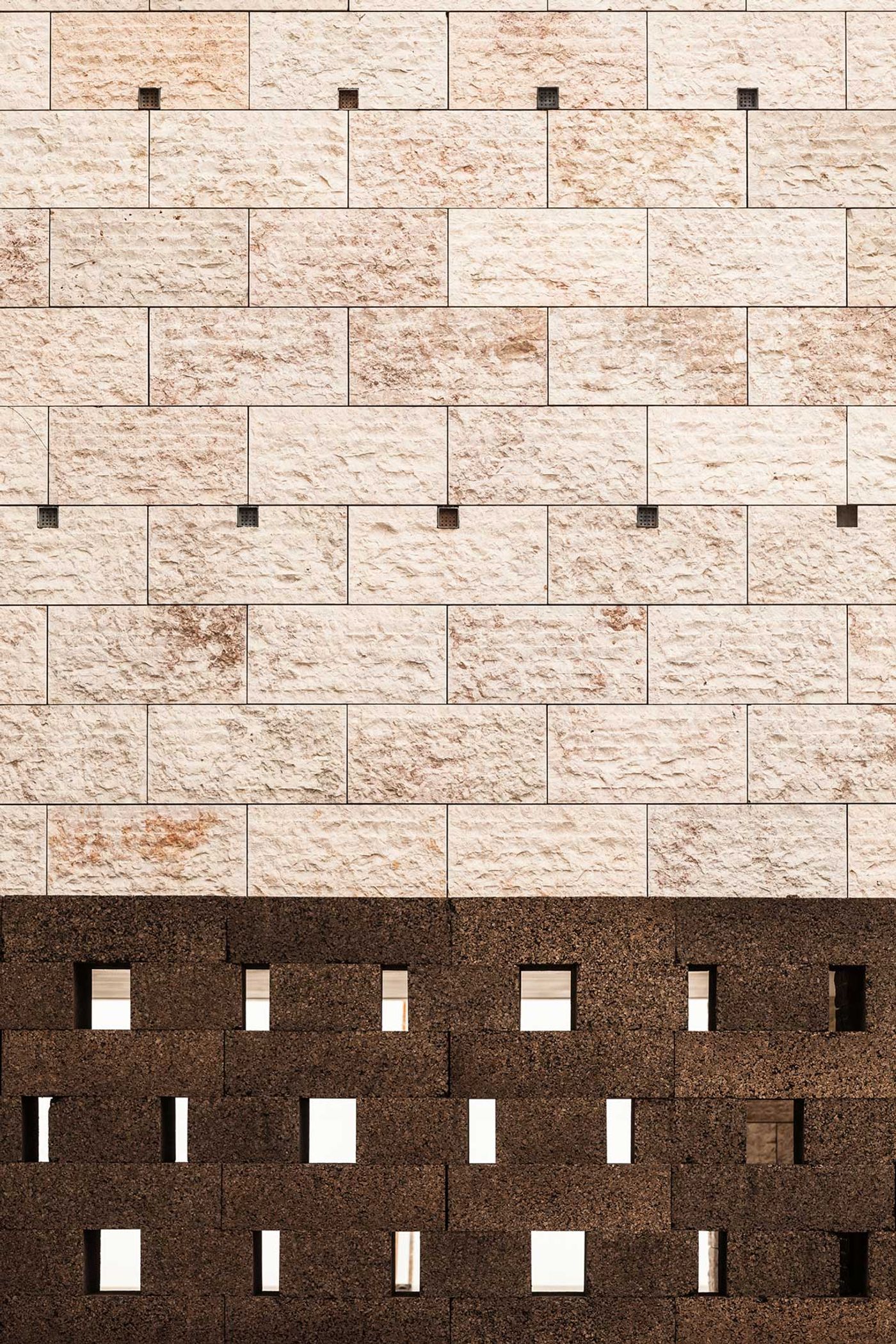
By joining the solid, smooth and warm blocks of cork to the slabs of limestone, the existing wrapping became lighter. Photo by Francisco Nogueira.